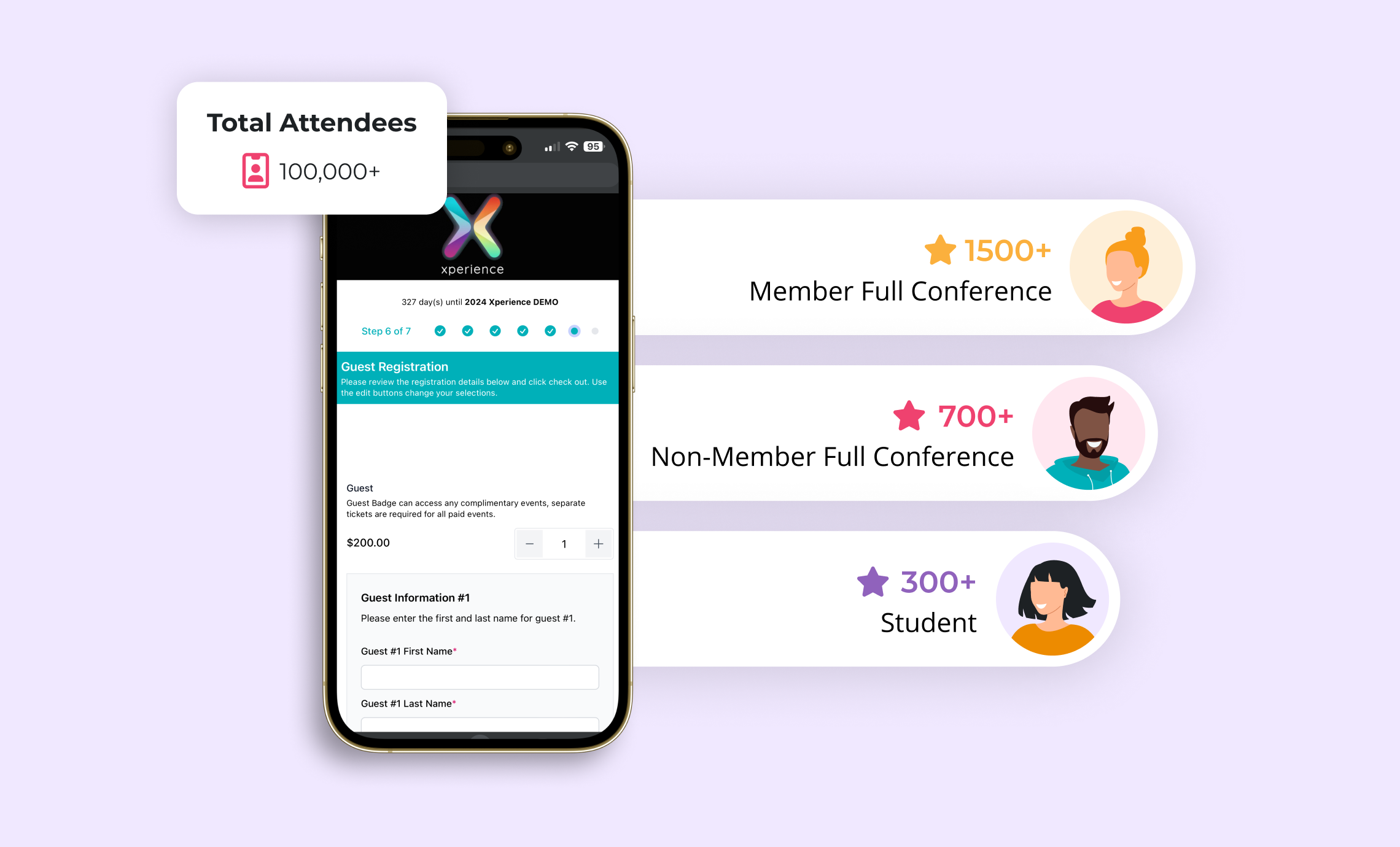
What is attendee data?
Attendee data provides valuable insight that can help show organizers understand the needs and expectations of their attendees to ensure their event’s success. By analyzing information about the attendee experience before and during the event, planners can identify elements that succeed and what needs improvement. This data will ultimately allow organizers to create a better experience for attendees and demonstrate ROI to exhibitors and vendors.
In this article, we will talk about tracking the attendee journey from beginning to end, what data can be collected and analyzed, and discuss different ways to track attendees.
Where does the attendee journey begin?
The attendee journey begins from the moment they first find out about your event. Most consumers are using the internet as their primary source of information to research products before making a purchase and this includes events, too. Attendees are visiting your event website first to find out more details and make the decision if they want to attend so you want to be sure to make a good first impression.
Remember to focus on making your website a resource for attendees with valuable information that will educate them about your event and how it will benefit them directly. Use their visit as an opportunity by adding a personalized greeting or custom content the attendee will remember.
Because the attendee journey starts before your event, you can use the registration process to collect information like demographics and interests. You can also track the steps the attendee takes to complete a registration – What page did they visit first? How long did they spend researching information before completing their registration? All this data can be analyzed to improve the experience for attendees even before they arrive at your event.
What aspects of the attendee journey should I be tracking?
Before you choose the method in which you track your attendees, organizers need to identify what data points are essential to capture and analyze to ensure positive results. The data points you select to gather will help you better understand attendee behavior and improve your event for the future. This data can also be analyzed to demonstrate ROI to your exhibitors and vendors.
Attendee tracking data can include:
- Attendee Demographics
- Web Visits
- Social Media
- Beacon/ RFID Tracking Technology
- Session Attendance
- etc.
By selecting the right data to collect and analyze, event organizers will gain valuable knowledge about their attendees but also about their overall event. This data can help determine what aspects of an event are working and identify things that need more attention.
With so much information available about the attendee journey, remember to stay focused and not get lost in all the data. Use the data you collect to provide relevant and beneficial information that will help you reach your event goals and improve for the future.
How do I track attendees at my event?
There are many ways to track the attendee journey and choosing the right methods are crucial to getting the results you are looking for. Selecting the right form of attendee tracking should align with what data you are looking to collect and how you will use this this data.
If you are looking to demonstrate ROI to your vendors and exhibitors, you may consider incorporating wearing beacon technology at your event. Wearable beacons are attached to the attendee’s badge and send signals to pinpoint their location and track the attendee’s movements. This information can be used to produce a heat map to measure traffic volumes. Organizers can see where attendees traveled throughout the event and exhibit hall and use this information to show exhibitors the number of visitors they had in their booth or area.
Session tracking is another easy and effective way to track your attendees and gather important data that you can use to improve your event. Tracking session attendance can help identify popular session topics that might need a bigger room for next year or identify sessions that aren’t being attended and cut these topics from the agenda.
It is important to do your research before selecting the technology you’ll use to track the attendee journey for your event. Keep in mind your end goal for the data you hope to collect, and this will help you choose the best option for your event.
When does the attendee journey end?
Attendees can provide important data even after the event is over. Gathering feedback using post-event surveys can provide insight you may not typically get from looking at other event analytics. Try including a survey in your event’s mobile app or send attendee’s an email with a direct link to the survey to make it easy for attendees to give their thoughts. Feedback after the event is important so that you can understand the full picture of the attendee journey and improve on their experience for next time.
Tracking the attendee journey from before the event to after the final session provides valuable information that organizers can leverage to improve every aspect of their event. Analyzing attendee data will help organizers understand attendee needs and expectations which, in turn, will help them provide a more meaningful, beneficial experience in the future.
Looking for more event advice? Subscribe to our blog and contact us today!


